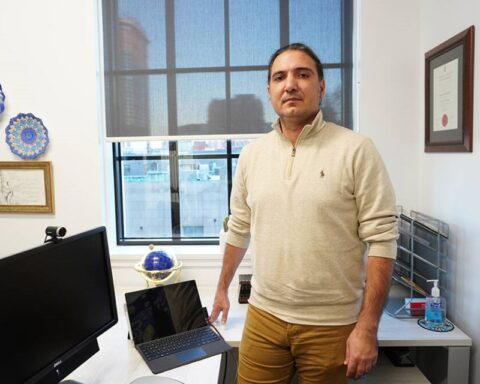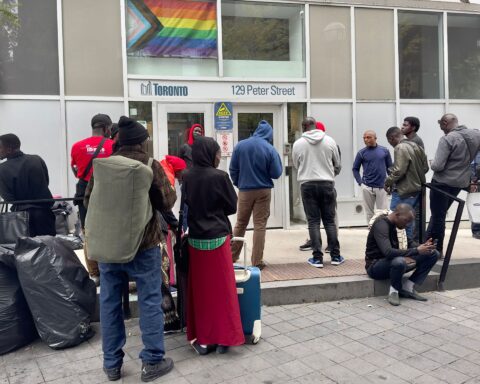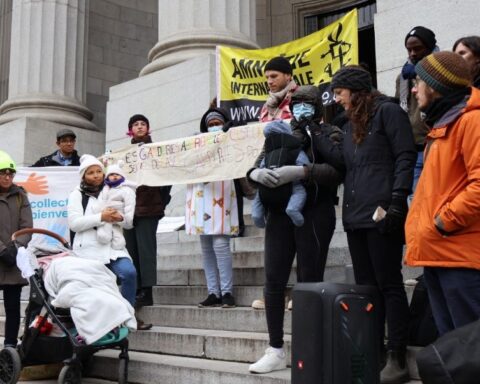PUBLISHER’S NOTE: Beginning today, NCM will bring readers a summary of what is appearing in ethnic media across Canada. We begin with English-language media, but hope to expand it to include all languages over the next few months.
In this week’s round-up of what’s been making headlines in Canada’s ethnic media: putting an end to 50 years of injustice for migrant workers, individuals making a difference for Syrian refugees on the ground level, and how newcomers are finding a balance between holding onto their native cultures and embracing Canada’s.
Migrant farmworkers: advocacy and celebration
Temporary foreign workers need access to permanent residency in order to protect them on the job.
This is the primary message the advocacy group Justicia for Migrant Workers (J4MW) delivered in a press conference Monday on Parliament Hill.
Permanent residency would grant farmworkers most social benefits.
The event was held to launch a year-long campaign, “Harvesting Freedom,” which will “culminate in a historic pilgrimage of migrant farmworkers and allies on to the nation’s capital … on October 2 and 3 to insist that justice is 50 years overdue,” reported the Indo-Canadian Voice.
“Low-wage workers like myself, coming to Canada in the Temporary Foreign Worker Program (TFWP), the Seasonal Agricultural Workers Program (SAWP), the Caregiver Program – are tied to single employers – which means closed work permits,” said Bahiwal Gregorgina (Gina), a Filipina temporary worker.
“This means that we are subject to abuse, exploitation, and separation from our families. I lost my first job because I tried to speak up. I tried to fight for my rights and recruitment fees, I helped other coworkers to speak up and they were threatened (with) deportation.”
Permanent residency would grant workers most social benefits, reports iPolitics, including health care and the ability to work or study anywhere in Canada.
This year marks the 50th anniversary of SAWP in Canada, a program created in 1966 as a result of labour shortages on Canadian farms. While it does have its challenges, as Share Newsreports it also has its upside.
“The program has … helped thousands of families overseas and farm owners here,” writes Tom Godfrey, “with some workers returning to the same farms for 30 years.”
A Montreal business owner plans to hire more Syrian refugees as Canada continues to accept them.
The first group of 300 farm workers from Jamaica recently arrived in Canada under the SAWP for 2016 and more than 8,000 from the island nation are expected over the year.
According to the report, more than JMD$1.7 billion was sent back to the country in remittances in 2015, and the country’s government officials say this money is vital to the local economy.
“The overseas program must be seen as a critical part of the growth agenda for our country,” said Delroy Palmer, Jamaica’s Director of Overseas Employment Service, in the article. “It must be seen as part of the economic growth of the country.”
Canadians stepping up for Syrians
A Montreal plywood factory has become a safe haven of sorts for refugees arriving in Canada.
According to a story published in the Epoch Times, picked up from the Canadian Press, Seatply Products Inc. – owned by Levon Afeyan, himself a refugee who fled Lebanon’s civil war with his family in 1975 – is a place where refugees not only find employment but can also gain access to things like French-language lessons and life-skills development.
There are currently 12 refugees from Syria employed at the factory, but people who came to Canada as refugees from Sri Lanka and Iraq work there as well.
The Montreal business owner plans to hire more Syrian refugees as Canada continues to accept them, stating in the article that he knows the importance of a job to these individuals.
“Respect is a big thing in the Middle East,” Afeyan states in the article. “A man has to be a respectable man. Without a job he doesn’t have that.”
Meanwhile, in British Columbia, Sikh community organization Guru Nanak Free Kitchen extended its welcoming hand to Syrian children arriving in Surrey with over 300 toys.
Randeep Sarai, member of Parliament for Surrey Centre, was on hand for the festivities, the Indo-Canadian Voice reported, wishing the children a wonderful future in Canada.
Newcomers tend to settle into neighbourhoods that have a similar culture to their homeland, which can sometimes be counterproductive.
“It is heartwarming to see how such a small act of kindness can put a smile on the kids’ faces,” Guru Nanak’s Paul Hundle told the Voice.
The toys handed out this past week were only one-third of the donations the Guru Nanak organization collected, so organizers say the rest will be distributed to the hundreds of Syrian children expected to arrive in British Columbia before the end of February.
Canada’s winning – thanks to diversity
A new survey entitled “Best Countries” ranks Canada second in the world. Only Germany is ahead of it.
According to Canadian Immigrant magazine, the survey, which was conducted by the U.S. News & World Report, the University of Pennsylvania’s Wharton School and global brand consultants BAV Consulting, considered 75 factors including sustainability, entrepreneurship and cultural and economic influence.
“Canadians pride themselves in encouraging all of their citizens to honour their own cultures,” the study said, making mention of the country’s official multiculturalism policy put into place in 1971.
While this may be a positive from the outside looking in, a new article published this week in The Source titled “Embracing Canadian culture through community connections” showcases the other side of the multiculturalism coin.
The article explains that newcomers tend to settle into neighbourhoods that have a similar culture to their homeland, which can sometimes be counterproductive.
Queenie Choo, CEO of immigrant-serving organization S.U.C.C.E.S.S. in British Columbia, explains in the article that newcomers need to embrace Canadian culture.
“It’s important for them to venture from what feels comfortable in their immediate surroundings so they can learn about our Canadian culture,” she says.





